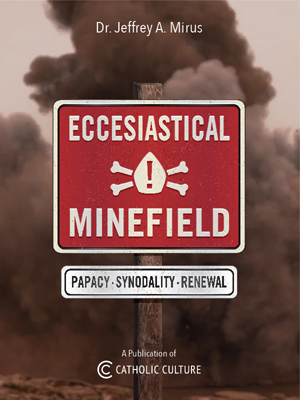Looking Ahead: March 4-20
By Jennifer Gregory Miller ( bio - articles - email ) | Mar 03, 2023 | In The Liturgical Year
This post covers the Second and Third Weeks of Lent, Second, Third and Fourth Sundays in Lent, feasts of Saints Patrick and Joseph, and interesting links to share:
Sundays and Lent
March 5 is the Second Sunday in Lent. The longevity of Lent is one of the bigger penitential aspects. We want a break in some way, which reminds me of my post, Are Sundays Part of Lent?
Short answer: Liturgically, yes, but for penitential reasons, the Church never requires fasting on Sundays. They are a little Easter!
Second Sunday in Lent: The Transfiguration
The Second Sunday of Lent has for the Gospel the description of the Transfiguration.
One of the hymns our parish usually sings is ‘Tis Good Lord to be Here. It has become one of my favorites, because it does echo Peter and now my thoughts if I was there on Mount Tabor.
I have a few posts on the Feast of the Transfiguration, which some things apply to contemplating the Gospel:
- The Transfiguration: August 6
- Feastday Highlights: The Transfiguration
- Resetting Point: The Feast of the Transfiguration
A Few Saints of March:
Although St. Patrick and St. Joseph are forefront in most minds, there are several saints’ feasts coming up in the next few weeks.
March 4: St. Casimir of Poland:
St. Casimir is one the patron saints of Poland, and is a model for young people, as he died at the age of 26. I’ve always been fond of Polish culture, and what a blessing to have had a saintly Polish pope that we could get know more of the Polish culture.
During Lent and Holy Week my family loves to write psyanky or pisanki as the Polish call it. I wrote a post in 2014, entitled Lent: A Time of Contemplation for All which touches on our family tradition. My son in high school is already asking to set up the dyes. Eggs will be more expensive this year, but it is totally worth it.
March 7: Saints Perpetua and Felicity:
These Roman martyrs as women and mothers showed such faith and confidence in martyrdom—a display that illustrates that “I can do all things in Him Who strengthens me! (Phil 4:13).”
St. John of God is the Patron of Hospitals, Patron of the Sick and Patron of Heart Patients. He was never on my radar until I was personally undergoing an open heart surgery, and I had friends and family ask St. John of God for his aid for me. Since then, I have enjoyed getting to know more about him.
St. Frances is another Roman saint who died in 1440. She lived the different vocations of being married, widowed and religious life. After her husband died, she had active apostolate in Rome for the poor and sick, now called the Oblates of St. Frances of Rome. I always thought she had become cloistered, so this was a new dimension I learned about this saint.
And St. Frances is the one to ask for help for driving, particularly at night!
The Third Week of Lent has fewer saints on the Universal Calendar except St. Patrick on Friday and
March 18: St. Cyril of Jerusalem
Reading all the work of St. Cyril, “tireless” is an adjective that comes to mind. He worked tirelessly...banished three times in his work to defend the truth, especially against the heresy of Arianism.
The Catholic Culture Library includes St. Cyril’s Catechetical Lectures On the Passion of Our Lord Jesus Christ, which is very fitting meditation material for Lent.
There are two Catholic Culture Audiobooks read by James Majewski on the Eucharist.
Novena to St. Joseph
St. Joseph’s Day is Monday, March 20. If you want to pray a novena, start March 11 or 12. Catholic Culture has several in the Prayers section:
Third Sunday of Lent
March 12 is the Third Sunday in Lent. The Gospel is the Jesus and the Samaritan Woman at the Well. “The Church begins the second phase of Lent—an extended meditation on Baptism—with one of the key gospel passages that were taught to the catechumens of the early Church as they prepared to receive the sacraments of initiation at the Easter Vigil: Baptism, Confirmation and the Eucharist” (George Weigel)
Fourth Sunday of Lent
March 19 is the Fourth Sunday in Lent, also known as Laetare Sunday. See my post Laetare, Jerusalem! Rejoice!
St. Joseph Altar or St. Joseph Table
One of my favorite traditions of St. Joseph is the St. Joseph Altar or St. Joseph Table. It is a really popular tradition particularly in southern Louisiana, and it can take months of planning and cooking to present in a parish setting. But it can be done in smaller groups, even at home. I have great memories of when the older children of a Montessori Elementary class came together and hosted a St. Joseph table for their classmates. it was fun to plan and execute.
If you’re trying to inspire people with photos of altars and foods and lots of recipes, I highly recommend these books, some of them newly published:
- St. Joseph Altars. Photograph and Text by Kerri McCaffety
- Building Saint Joseph Altars: A Feast for the Soul by Laura Padron
- Celebrating with St. Joseph Altars: The History, Recipes, and Symbols of a New Orleans Tradition by Sandra Scalise Juneau
- The Saint Joseph’s Day Table Cookbook: Recipes and Traditions of the Giordano Family by Mary Ann Giordano with Paul B. Giordano, M.D.
And don’t forget to visit the Virtual St. Joseph Altar for more information, recipes, and your own virtual offerings.
For More Reading:
See my past posts on St. Joseph and St. Patrick:
- Celebrating St. Joseph
- Solemnity of St. Joseph: A Family Celebration
- Our Lenten Journey: What Would St. Joseph Do?
- The Great Saints of March: Patrick and Joseph
- The Oases of Lent: Celebrations of St. Patrick, St. Joseph, Annunciation and Family Days
- Feastday Highlights: St. Patrick and the Paschal Feast
Around the Internet:
- I really enjoy the interview of Bishop Varden, The ‘whole point of Lent’: Bishop Erik Varden on finding God this Lent. What particularly struck me was his suggestion:
The first thing would be to follow the Church’s liturgy. Just reading the Collects for Lent is a marvelous exercise. We simply don’t realize what a treasure we have in that great collection of prayers. Taking the Collect for each day, reading it slowly, and analyzing it to make sure I really understand what it says—because those are very, very dense texts—then trying to apply it to my life. That would be an excellent way of praying in Lent.
Catholic Culture provides the Collect prayer for each day of the Liturgical Year—a handy tool!
- Although February 11 has passed, I found this article interesting: Nutella founder said secret of success was Our Lady of Lourdes. I have not eaten much Nutella, but now feeling a little craving to try it.
- Grief is not a cut and dried process. My sister passed this (secular) site to me, and I’ve found some very helpful material: What’s Your Grief?
- Now that we are in the month of March, it is now considered meteorological spring. What Are Meteorological Seasons Vs. Astronomical Seasons?
All comments are moderated. To lighten our editing burden, only current donors are allowed to Sound Off. If you are a current donor, log in to see the comment form; otherwise please support our work, and Sound Off!








